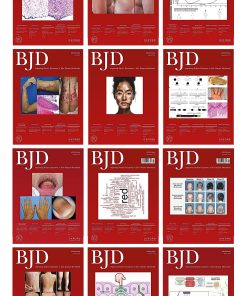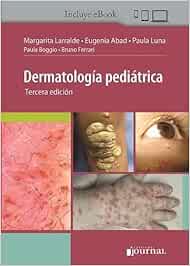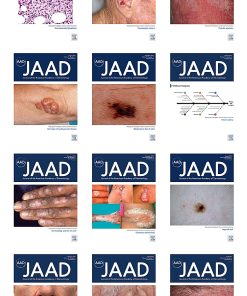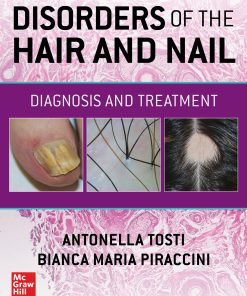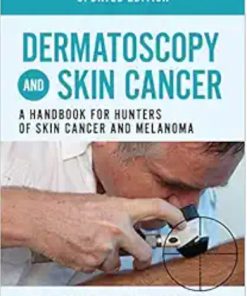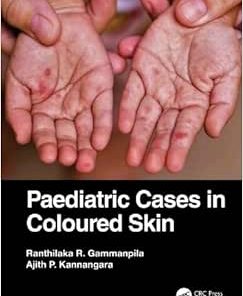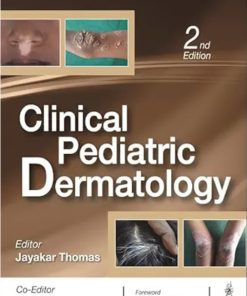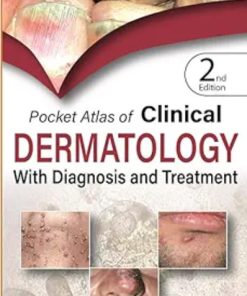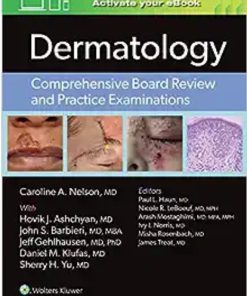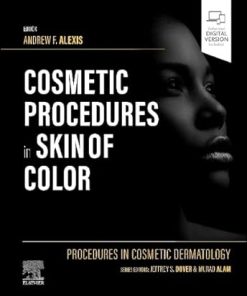DERMATOLOGY
DERMATOLOGY
DERMATOLOGY
DERMATOLOGY
Procedures in Cosmetic Dermatology: Cosmetic Procedures in Skin of Color (ePub+Converted PDF+Videos)
DERMATOLOGY
DERMATOLOGY
DERMATOLOGY
DERMATOLOGY
DERMATOLOGY
DERMATOLOGY
Clinical and Dermoscopic Atlas of Non-Neoplastic Dermatoses: Variability According to Phototypes
Introduction
Are you looking to enhance your knowledge of dermatology? Look no further than our list of the best dermatology books. Whether you are a medical professional, student, or just someone interested in learning more about skin care and treatments, these books provide comprehensive information on the subject. From basic anatomy and physiology to advanced topics such as laser treatments and cosmetic surgery, these books cover it all. With detailed explanations and illustrations, you can be sure to gain a better understanding of the field. So, if you're ready to take your knowledge of dermatology to the next level, check out our list of the best dermatology books today!
Overview of Common Skin Conditions and Treatments
Skin conditions are a common occurrence in people of all ages, genders, and backgrounds. They can range from mild to severe, and can be caused by a variety of factors such as genetics, environmental exposure, and lifestyle choices. Common skin conditions include acne, eczema, psoriasis, rosacea, and warts. Each of these conditions has its own set of symptoms and treatments.
Acne is one of the most common skin conditions, affecting up to 80% of people at some point in their lives. It is characterized by red, inflamed bumps on the face, chest, back, and shoulders. Acne is caused by an overproduction of oil in the skin, which can be triggered by hormones, stress, or certain medications. Treatment for acne typically involves topical creams or gels that contain benzoyl peroxide or salicylic acid, as well as oral antibiotics.
Eczema is another common skin condition that affects up to 10% of people. It is characterized by dry, itchy patches of skin that can become red and inflamed. Eczema is often caused by allergies or irritants, and can be made worse by stress or changes in temperature. Treatment for eczema typically involves moisturizers, anti-itch creams, and corticosteroid creams.
Psoriasis is a chronic skin condition that affects up to 3% of people. It is characterized by thick, scaly patches of skin that can be red, white, or silver in color. Psoriasis is caused by an overactive immune system, and is often triggered by stress or certain medications. Treatment for psoriasis typically involves topical creams or ointments, light therapy, and oral medications.
Rosacea is a skin condition that affects up to 10% of people. It is characterized by redness and flushing of the face, as well as small bumps and pimples. Rosacea is often caused by sun exposure, stress, or certain medications. Treatment for rosacea typically involves topical creams or gels, oral antibiotics, and laser treatments.
Warts are a common skin condition that affects up to 10% of people. They are caused by a virus, and are characterized by small, raised bumps on the skin. Treatment for warts typically involves topical creams or gels, cryotherapy, or laser treatments.
No matter what type of skin condition you have, it is important to seek medical advice from a dermatologist or other healthcare professional. With proper diagnosis and treatment, most skin conditions can be managed effectively.
Understanding the Role of Genetics in Dermatology
Genetics plays an important role in dermatology, as many skin conditions are caused by genetic mutations. Genetic mutations can cause a variety of skin conditions, including birthmarks, moles, freckles, and other pigmentation disorders. They can also cause skin diseases such as psoriasis, eczema, and vitiligo. In addition, genetic mutations can lead to skin cancer, which is one of the most common forms of cancer.
Genetic testing can be used to identify genetic mutations that may be responsible for certain skin conditions. This type of testing can help doctors diagnose and treat skin conditions more effectively. It can also provide valuable information about a person’s risk of developing certain skin conditions. For example, if a person has a family history of skin cancer, genetic testing can help determine if they are at an increased risk of developing the disease.
In addition to genetic testing, dermatologists use a variety of other techniques to diagnose and treat skin conditions. These include physical examinations, biopsies, imaging tests, and laboratory tests. By combining these methods with genetic testing, dermatologists can gain a better understanding of a patient’s condition and develop an effective treatment plan.
Genetics is an important part of dermatology, and it is essential for dermatologists to understand the role of genetics in skin conditions. By using genetic testing and other diagnostic techniques, dermatologists can accurately diagnose and treat skin conditions, helping patients achieve healthier skin.
The Latest Advances in Cosmetic Dermatology
Cosmetic dermatology is a rapidly growing field of medicine that focuses on improving the appearance of skin, hair, and nails. It is a branch of dermatology that uses medical, surgical, and aesthetic techniques to improve the appearance of skin, hair, and nails. The latest advances in cosmetic dermatology have made it possible to treat a wide range of conditions, from wrinkles and age spots to acne and rosacea.
The most common treatments used in cosmetic dermatology are laser treatments, chemical peels, dermabrasion, and injectables. Laser treatments use light energy to target specific areas of the skin, such as wrinkles or age spots. Chemical peels involve applying a chemical solution to the skin to remove the outer layer of dead skin cells. Dermabrasion is a procedure that uses a rotating brush to exfoliate the skin and reduce the appearance of wrinkles and other blemishes. Injectables are substances injected into the skin to fill in wrinkles and plump up the skin.
In addition to these treatments, there are also several new technologies being developed for cosmetic dermatology. One of the most exciting developments is the use of stem cells to regenerate skin tissue. Stem cell therapy has been used to treat a variety of skin conditions, including burns, scars, and wrinkles. Another new technology is the use of radiofrequency energy to tighten and lift sagging skin. This technology can be used to reduce the appearance of wrinkles and fine lines.
Finally, there are also several new products available for cosmetic dermatology. These include topical creams and serums that contain ingredients such as retinol, hyaluronic acid, and peptides. These products can help to reduce the appearance of wrinkles, dark spots, and other signs of aging.
Overall, the latest advances in cosmetic dermatology have made it easier than ever before to achieve a more youthful and vibrant look. With the right treatments and products, you can reduce the appearance of wrinkles, age spots, and other signs of aging.
Exploring the Benefits of Natural Skin Care Products
Natural skin care products are becoming increasingly popular as people become more aware of the potential health risks associated with synthetic ingredients. Natural skin care products are made from plant-based ingredients that are free from harsh chemicals, artificial fragrances, and other potentially harmful additives. These products are designed to nourish and protect the skin while providing a gentle, natural glow.
The benefits of using natural skin care products are numerous. For starters, they are much gentler on the skin than their synthetic counterparts. Natural ingredients are less likely to cause irritation or allergic reactions, making them ideal for those with sensitive skin. Additionally, natural skin care products are often packed with antioxidants, vitamins, and minerals that can help to nourish and protect the skin from environmental damage.
Another benefit of natural skin care products is that they are typically free from harsh chemicals and synthetic fragrances. Many synthetic ingredients can be irritating to the skin, leading to redness, dryness, and even breakouts. Natural skin care products are free from these potentially irritating ingredients, making them a safer option for those with sensitive skin.
Finally, natural skin care products are often more affordable than their synthetic counterparts. This is because natural ingredients are generally less expensive to produce than synthetic ones. Additionally, many natural skin care products are available in bulk, allowing you to save money by buying larger quantities.
Overall, natural skin care products offer numerous benefits over their synthetic counterparts. They are gentler on the skin, free from harsh chemicals and synthetic fragrances, and often more affordable. If you’re looking for a safe and effective way to take care of your skin, natural skin care products may be the perfect choice.
Tips for Maintaining Healthy Skin and Avoiding Skin Problems
Having healthy skin is essential for feeling confident and looking your best. Unfortunately, many people struggle with skin problems such as acne, dryness, wrinkles, and sun damage. Fortunately, there are some simple tips you can follow to maintain healthy skin and avoid skin problems.
First, it’s important to keep your skin clean. Wash your face twice a day with a gentle cleanser and warm water. Avoid using harsh soaps or scrubbing too hard, as this can irritate the skin. Additionally, be sure to remove all makeup before going to bed. This will help prevent clogged pores and breakouts.
Second, use sunscreen every day. Sun exposure can cause premature aging and increase your risk of skin cancer. Choose a sunscreen with an SPF of at least 30 and apply it to all exposed areas of skin. Reapply every two hours if you’re spending time outdoors.
Third, stay hydrated. Drinking plenty of water helps keep your skin hydrated and prevents dryness. Aim for eight glasses of water per day. You can also get additional hydration from foods like fruits and vegetables.
Fourth, eat a balanced diet. Eating a variety of nutrient-rich foods can help keep your skin healthy. Focus on eating plenty of fruits, vegetables, whole grains, lean proteins, and healthy fats. Avoid processed foods and sugary drinks, as these can lead to inflammation and breakouts.
Finally, manage stress. Stress can take a toll on your skin, leading to breakouts and other skin problems. Take time each day to relax and unwind. Exercise, meditate, or do something else that helps you de-stress.
By following these tips, you can maintain healthy skin and avoid skin problems. Remember to cleanse your skin regularly, wear sunscreen, stay hydrated, eat a balanced diet, and manage stress. With a little effort, you can have beautiful, glowing skin.
Conclusion
In conclusion, having the right dermatology books can be a great way to enhance your knowledge and understanding of skin care. Whether you are a medical professional or just someone interested in learning more about skin health, there are many excellent books available that can help you gain a better understanding of the subject. With so many options to choose from, it is important to do your research and find the best dermatology books for your needs. By doing so, you will be able to get the most out of your reading experience and become an expert on skin care.


